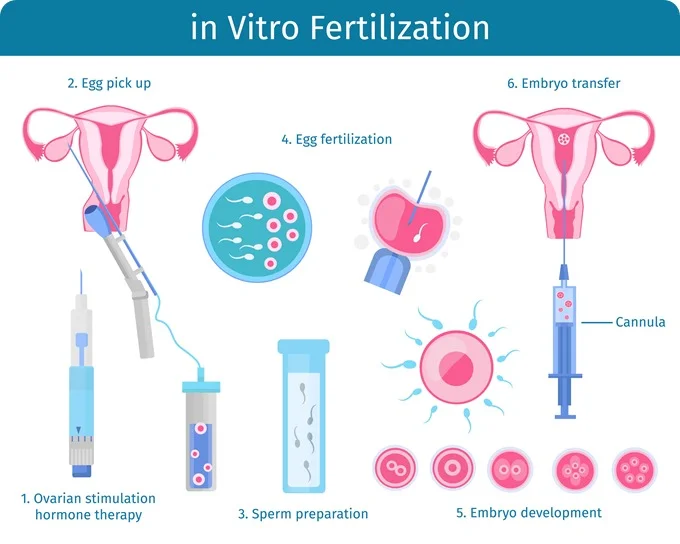
08 Jul How Did You Decide to Try IVF?
Introduction
Deciding to try in vitro fertilization (IVF) is a significant step for couples facing infertility issues. It is a complex and emotional journey that requires careful consideration and understanding. In this article, we will explore the various factors that may influence a couple’s decision to pursue IVF, the steps involved in the process, and address common questions and concerns.

How Did You Decide to Try IVF?
Making the decision to try IVF is often a deeply personal one. Couples may arrive at this choice after exhausting other fertility treatments or due to specific medical conditions that make IVF a recommended option. There are several factors that can influence this decision, including:
Emotional readiness
When facing infertility challenges, couples may go through a rollercoaster of emotions. The decision to pursue IVF often comes after much soul-searching and emotional processing. It requires a certain level of emotional readiness to embark on this journey, as the process can be physically and emotionally demanding.
Medical recommendations
Medical professionals play a vital role in guiding couples through their fertility journey. If other fertility treatments have been unsuccessful or if certain medical conditions are present, doctors may recommend IVF as the next step. The expertise and advice of these professionals can be a crucial factor in the decision-making process.
A desire for a biological child
The desire to have a biological child is a common reason for considering IVF. Some couples may have explored alternative options, such as adoption or surrogacy, but have a strong desire to experience pregnancy and childbirth. IVF offers the opportunity for couples to conceive using their own eggs and sperm, fulfilling this longing.
Success rates and statistics
Researching success rates and statistics of IVF procedures can play a role in the decision-making process. Couples often seek reassurance that their chances of success are reasonably high before embarking on the physically and financially demanding IVF journey. Consulting reputable sources and medical professionals can provide valuable insights into success rates.
Support systems
The support system surrounding the couple can greatly influence their decision to try IVF. Family, friends, and support groups provide emotional support, advice, and encouragement throughout the process. Knowing that they have a strong network of people who will be there for them can give couples the confidence to move forward.
The Process of IVF
Understanding the process of IVF is essential for couples considering this fertility treatment. It involves several stages, each with its own significance and requirements. Here is a step-by-step breakdown of the IVF process:
Step 1: Ovarian stimulation
The first step of IVF involves ovarian stimulation, where fertility medications are administered to stimulate the ovaries to produce multiple eggs. This is done through self-administered injections over a period of about 10 to 12 days. Regular monitoring and ultrasound scans are conducted to track follicle development.
Step 2: Egg retrieval
Once the follicles have reached the desired size, the eggs are retrieved in a minor surgical procedure called transvaginal ultrasound aspiration. The procedure is performed under anesthesia, and a thin needle is used to collect the eggs from the follicles. The retrieved eggs are then placed in a laboratory dish.
Step 3: Sperm collection and preparation
On the same day as the egg retrieval, the male partner provides a semen sample. The sperm is then prepared in the laboratory to isolate the healthiest and most motile sperm for fertilization.
Step 4: Fertilization
In the laboratory, the eggs and sperm are combined through a process called insemination or intracytoplasmic sperm injection (ICSI). This step involves either placing the eggs and sperm together in a dish or injecting a single sperm directly into each mature egg. The fertilized eggs, now called embryos, are monitored for development.
Step 5: Embryo transfer
After the embryos have developed for a few days, one or more embryos are selected for transfer into the woman’s uterus. This procedure is usually done without anesthesia and involves passing a thin catheter through the cervix to place the embryos into the uterus. The number of embryos transferred depends on various factors, including the woman’s age and embryo quality.
Step 6: Waiting period and pregnancy test
Following the embryo transfer, couples enter a waiting period of approximately two weeks. During this time, they are advised to avoid stress and excessive physical activity. At the end of the waiting period, a pregnancy test is conducted to determine if the IVF procedure was successful.
Frequently Asked Questions (FAQs)
- Q: Is IVF the right choice for every couple? A: IVF may not be the right choice for every couple. It is important to consult with a fertility specialist to determine the most suitable treatment option based on individual circumstances.
- Q: Are there any risks or side effects associated with IVF? A: IVF carries certain risks and potential side effects like any medical procedure. These can include ovarian hyperstimulation syndrome, multiple pregnancies, and emotional stress. However, advancements in technology and medical practices have significantly reduced these risks.
- Q: How long does an IVF cycle typically take? A: An IVF cycle typically takes around four to six weeks from the start of ovarian stimulation to the pregnancy test. However, the timeline can vary depending on individual circumstances and any necessary additional procedures.
- Q: What are the success rates of IVF? A: Success rates of IVF depend on various factors, including the woman’s age, the quality of embryos, and the clinic’s expertise. It is important to discuss success rates with a fertility specialist who can provide personalized information.
- Q: How can couples cope with the emotional challenges of IVF? A: The emotional challenges of IVF can be overwhelming. Seeking support from loved ones, joining support groups, and accessing counseling services can help couples navigate the emotional rollercoaster.




No Comments